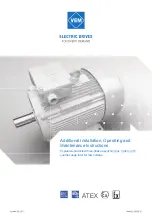
6
7741591 / 2003-12
Factors that affect engine performance
Power ratings
A great number of environmental factors, such as barometric
pressure, ambient temperature, humidity, the quality of fuel,
and exhaust back pressure can affect engine performance.
When it comes to quoting and comparing ratings, it is important
that there is a unified set of standards for measurement.
In September 1989, all major marine engine manufacturers
agreed to quote engine power output according to a common
set of conditions. These conditions are referred to as
ISO
8665. All Volvo Penta engines meet the ISO 8665 standard.
This ISO standard outlines the following fixed values or com-
mon conditions for determining the rating of the engine.
Condition
Value
Sea water temperature
77° F (25° C)
Fuel temperature
104° (40° C)
Air temperature
77° F (25° C)
Condition
Exhaust back pressure
1.45 PSI (10 kPa)
Barometric pressure
14.504 PSI (100 kPa)
Relative humidity
30%
Value
A gasoline engine operates with very little surplus air. When
conditions deviate from the standard values, the result can be
a loss of power at full load. It can also cause a rise in exhaust
emissions due to incomplete fuel combustion.
Marine engines can be rated according to one of several power
standards, but power output itself is quoted in kilowatts (KW) or
horsepower (HP), for a given engine speed, usually at maxi-
mum revolutions per minute (RPM).
How load conditions affect the speed of a
planing hull
The overall weight of the boat is another important factor in
performance. Any increase in boat weight will slow down the
boat speed, particularly on boats with planing and semiplaning
hulls.
For example, a new boat tested with fuel and water tanks only
half filled, and without any load, can easily drop 2 to 3 knots in
speed when tested fully fuelled and loaded with all normal
equipment and supplies for safe and comfortable cruising. This
is because the propeller installed originally is frequently one
that is designed to give maximum speed when the boat is new.
For this reason it is often advisable to reduce the propeller
pitch by as much as an inch or more in order to counter the ef-
fects of the increase in overall weight encountered in normal
cruising, particularly in hotter climates. Although this will re-
duce top speed somewhat, overall ride conditions will improve
and you should achieve greatly enhanced acceleration.
In considering the influence of weight, it is worth remembering
that fiberglass boats absorb a significant amount of water into
their hulls while left afloat for any
length of time and so become
progressively heavier. Another negative influence on boat per-
formance is marine growth beneath the waterline - a problem
that is often overlooked.
“Wagon-back” effect
As long as we continue to use combustion technology for en-
gines, there will be exhaust emissions. Despite the substantial
reductions achieved in modern engines, as fuel burns exhaust
emissions and fumes will always be given off.
But there is also another effect. Any shear-bodied object mov-
ing forward will create a phenomenon we call “wagon-back ef-
fect.” Due to a difference in air pressure, the airflow behind
such an object will have a tendency to draw dirt and exhaust
emissions back into the object. (You’ll frequently see evidence
of this in the excess of road grime that is drawn back onto the
rear windows of cars.) A boat with a sheer, broad transom and
high superstructure creates its own wagon-back effect. This
recirculating air has a tendency to draw exhaust fumes and
water spray up toward the afterdeck. Often people will make
the mistake of opening a ventilator or port hole in order to re-
move the fumes, but it has the opposite effect — more fumes
are drawn in, and conditions merely become worse. In high
concentrations these fumes may be hazardous. If you suspect
that your boat exhibits this “wagon-back” effect. Please contact
your Volvo Penta dealer.
Your new boat
Every new boat has it’s own special characteristics. Even ex-
perienced boat owners should note carefully how a boat be-
haves at different speeds, weather conditions, and loads. Your
boat owner’s manual contains information to help you operate
it with safety and pleasure. It contains details of the boat,
equipment supplied or fitted, systems, and information on op-
eration and maintenance. Please read it carefully, and familiar-
ize yourself with your boat before using it for the first time.
We strongly recommend that you install an emergency stop
switch, regardless of the type of boat. If your boat does not
Introduction
7741591 - Downloaded from www.volvopenta.com 12/03/2014 09:32:39
Содержание 3.0GL-B
Страница 2: ...7741591 Downloaded from www volvopenta com 12 03 2014 09 32 39 ...
Страница 16: ...14 7741591 2003 12 Notes 7741591 Downloaded from www volvopenta com 12 03 2014 09 32 39 ...
Страница 46: ...44 7741591 2003 12 Notes 7741591 Downloaded from www volvopenta com 12 03 2014 09 32 39 ...
Страница 107: ...7741591 Downloaded from www volvopenta com 12 03 2014 09 32 39 ...
Страница 108: ...7741591 English 12 2003 AB Volvo Penta SE 405 08 Göteborg Sweden www volvopenta com ...









































